I. Analysis of the status quo of in vitro diagnostic development
In 2014, the scale of China's in vitro diagnostic market reached 30.6 billion yuan. It is estimated that the market size will reach 72.3 billion yuan in 2019, with an average annual compound growth rate of 18.7%. In 2014, the market size of China's in vitro diagnostic products reached 24.6 billion yuan.
Market size of China's in vitro diagnostic industry from 2008 to 2014

China's in vitro diagnostic market scale trend from 1995 to 2015
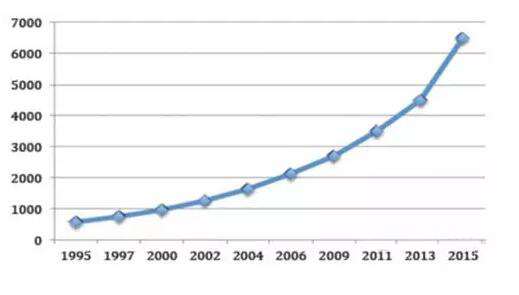
Second, in vitro diagnostic industry segmentation field POCT industry rapid development analysis
(I) Analysis of the rapid development of the POCT industry
POCT belongs to the subdivision of the in vitro diagnostic industry. With the continuous improvement of medical diagnosis and treatment level, especially in the emergency department, intensive care unit, operating room, environmental protection and food hygiene monitoring, forensic and military inspections, it is necessary to obtain more through in vitro diagnosis. Fast and accurate data. Although the traditional inspection medicine has been improved after the automation, the quality and speed of the inspection have been significantly improved. However, due to the complicated operation steps in the analysis process, it is difficult to obtain accurate test results in a short time. POCT does not require professional clinical examiner operation, and can eliminate the steps of sample processing, sample delivery, equipment testing, data processing and data transmission, and directly and quickly obtain results, create conditions for patients to visit at a good time window, and improve medical quality. And patient satisfaction.
With its convenient use and wide range of applications, POCT has been receiving more and more attention and attention. It has become one of the fastest growing segments of the in vitro diagnostic industry.
China's POCT market started late, still in the early stage of development, the overall market size is small, and the penetration rate of hospitals and other terminals is low, so there is a huge potential market. China's POCT market has great application space in hospital surgery, emergency, intensive care, chronic disease prevention, public health emergencies, county-level medical institutions, and new rural cooperative medical care.
Relevant data shows that the size of China's POCT market in 2013 was 480 million US dollars. With the advancement of medical reform and the establishment of a community medical system, China's POCT market will maintain a compound annual growth rate of 20% in the next few years. It is expected that by 2018, China's POCT market will reach US$1.43 billion.
China's POCT market size in 2013-2018 (US$100 million)
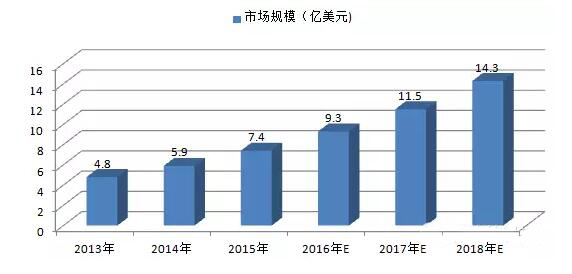
The technical advantages of POCT meet the needs of the development of laboratory medicine (short time, small space, and operability). The quality and speed of traditional laboratory medicine have improved significantly after automation. However, because there are still many complicated problems before and after analysis, it takes a lot of time and it is difficult to meet the clinical "get in the shortest time." The requirements for accurate inspection results. POCT can eliminate many steps such as sample pretreatment, sample inspection, cumbersome equipment detection, data processing and transmission process, and directly and reliably obtain reliable results to meet the current medical development needs and win valuable time for further rescue of doctors.
POCT meets the needs of the development of laboratory medicine
project | Clinical laboratory | POCT |
Turnaround time | SLOW | fast |
Specimen processing | usually need | No need |
Blood specimen | Serum, plasma | Whole blood |
Correction | Frequent and cumbersome | Infrequent and simple |
Reagent | Reagent | Ready to use |
Consumables | Relatively small | Relatively |
Detector | complex | simple |
Operator requirements | Professional | Non-specialist |
Quality of experimental results | high | Close to laboratory results |
POCT products are widely used, from testing items, mainly to blood glucose testing, blood gas and electrolyte analysis, rapid hemagglutination testing, rapid diagnosis of cardiac markers, drug abuse screening, urine analysis, dry biochemical testing, pregnancy Testing, fecal occult blood analysis, food pathogen screening, hemoglobin testing, infectious disease testing, testing of blood lipids such as triglycerides and cholesterol, etc. In recent years, the blood glucose testing POCT products have matured due to their technical and commercial promotion, and their demand has gradually declined, but they are still the main market for POCT; the demand for cardiac markers, infectious diseases and coagulant POCT products has steadily increased. .
8 major areas of POCT's main applications
Serial number | Application field | Application examples |
1 | Medical Laboratory | Hepatitis (A, B, E) testing, influenza testing, CRP testing, etc.; |
2 | Hospital Non-inspection | , myocardial infarction heart failure test, blood glucose test, etc.; |
3 | Primary care (township hospitals and community clinics) | Urine analysis, dry biochemical testing, hepatitis testing, etc.; |
4 | Personal family self-inspection and health management | Ovulation, pregnancy, blood pressure, blood glucose testing, etc.; detection of blood lipids such as triglycerides and cholesterol |
5 | Epidemic control | Detection and control of major epidemics such as SARS and A stream; |
6 | Military medicine and disaster relief | CRP detection, blood gas and electrolyte analysis, rapid coagulation testing, malaria, etc.; |
7 | On-site supervision | Public security anti-drug testing, traffic police driving test, etc.; |
8 | Food safety supervision | Detection of clenbuterol, melamine, etc.; |
At present, the global POCT market is dominated by multinational giants, among which Johnson & Johnson and Roche are leading the blood sugar field, and Alere and Abbott are leading in the fields of blood gas and heart markers. With the different growth of downstream demand and the maturity of technological development, the various sub-domains of POCT have also differentiated. The proportion of blood sugar has gradually declined, and the proportion of cardiac markers, infectious diseases and blood coagulation has gradually increased, indicating that it has increased. The speed is higher than the overall POCT.
POCT's market share
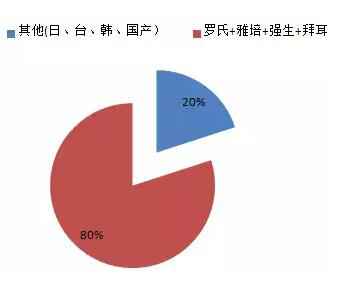
At present, the development of China's POCT market is lagging behind. In 2009, the market capacity accounted for less than 3% of the world, far less than the global share of the pharmaceutical market. However, with the promotion of medical reform to promote grassroots health investment, the growth of various emergency emergency diagnosis needs, and the continuous introduction of POCT concepts and technologies, China's POCT industry has great potential.
(II) Analysis of the continuous growth of POCT market demand
1. Chinese society is developing towards aging
According to the National Bureau of Statistics of China, the total population of China in 2014 was 1.367 billion, of which 212 million were 60 years old and above, accounting for 15.5% of the total population; 137 million were 65 years old and older. The total population is about 10.1%. According to the World Health Organization, 35% of China's population will be over 60 years old by 2050, making it one of the countries with severe aging in the world.
The prevalence rate and medical expenditure of the elderly are far more than that of young people. As Chinese society develops to an aging age, there are more and more elderly people suffering from chronic diseases such as diabetes, cardiovascular and cerebrovascular diseases, and liver and kidney diseases. POCT instant diagnostic products are characterized by simple operation, short detection cycle, continuous monitoring and management of patients, and therefore are favored by the market. The demand for POCT market will continue to grow along with the aging process.
China's aging population trends from 2010 to 2015
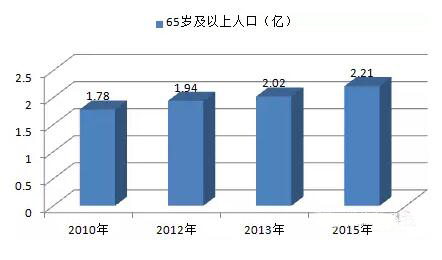
Proportion of elderly population aged 65 and over in China from 2000 to 2050 (unit: %)
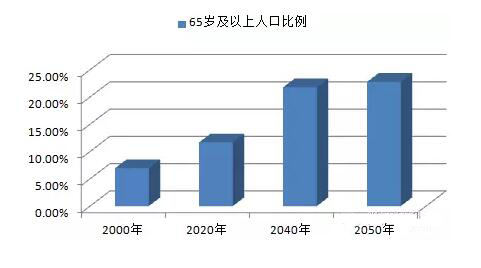
2. Per capita disposable income and per capita health care expenditure continue to increase
As China's economy continues to develop, the per capita income of residents continues to grow, and the demand for medical consumption continues to increase. According to the statistics of the National Bureau of Statistics of China, the per capita disposable income of urban residents in China increased from 15,781 yuan in 2008 to 28,844 yuan in 2014, with a compound annual growth rate of 10.57%; the per capita disposable income of rural residents was raised from 4,761 yuan in 2008 to In 2014, the annual compound growth rate was 10,489 yuan, which was 14.07%. At the same time, China's per capita health expenditure has also increased rapidly. According to data released by the Ministry of Health, the per capita health care expenditure of urban residents in China has increased from 786.20 yuan in 2008 to 1,118.30 yuan in 2013. The per capita health care expenditure of rural residents was from 2008. The amount of 246.00 yuan increased to 614.20 yuan in 2013. The continuous growth of per capita income has provided a strong guarantee for health care expenditure, and the market demand for POCT has also been rapidly improved.
3. Advancement of graded diagnosis and treatment system
In September 2015, the General Office of the State Council issued the “Guiding Opinions on Promoting the Construction of Graded Diagnosis and Treatment System†(Guo Ban Fa [2015] No. 70), pointing out that by 2020, the first-level consultation, two-way referral, and rapid division and treatment,
The grading diagnosis and treatment model linked up and down is gradually formed, and a grading diagnosis and treatment system in line with national conditions is basically established. As the basis for grading diagnosis and treatment, the first-level consultation at the grassroots level encourages patients with common diseases and frequently-occurring diseases to go to primary health care institutions first. By 2017, the proportion of primary and secondary medical and health institutions in diagnosis and treatment should be no less than 65%, and the construction of primary health care institutions. The compliance rate is not less than 95%, which puts higher requirements on the experimental diagnostic ability of primary health care institutions. POCT products are characterized by “small portability, simple operation, easy to use, and instant reportâ€. They do not need large-scale testing instruments, and POCT testing instruments are generally cheaper. They are suitable for use in primary health care institutions and can meet the necessary inspection services for the people. At the same time, it greatly reduces the investment in equipment and equipment, in line with the requirements of the national grading diagnosis and treatment policy. POCT products are an important means to give full play to the early diagnosis and prevention functions of primary health care institutions. With the continuous advancement of the graded diagnosis and treatment system, the POCT industry will usher in a broad space for development. The replacement of imported products by domestic enterprises will increase with the strength of China's national economy. As well as the rapid development of in vitro diagnostic related industries, the technical level of China's in vitro diagnostic industry has made considerable progress. Through continuous independent research and development and technological innovation, a number of outstanding national enterprises with independent intellectual property rights and core competitiveness have emerged in China, such as the company, basic egg biology, and Wanfu biological. The quality of POCT products of domestic enterprises has gradually reached the international level, and the test results are comparable.
The versatility has been significantly improved. At the same time, domestic enterprises have gradually made breakthroughs in the contest with foreign competitors by virtue of their localized marketing and service network and low labor costs. The scale and speed of import substitution of domestic POCT products are constantly increasing. Promotion
4, diagnostic technology continues to improve
Since the 20th century, with the wide application of computer science, physics, mathematics, immunology, molecular biology and other technologies in the medical field, diagnostic technology has made breakthroughs, simple, fast, accurate, high-throughput detection. It is possible that the detection technology of POCT has also developed rapidly. For example, the technology of sample labeling has evolved from gold standard and dry chemical luminescence to fluorescence and chemiluminescence. The technology of combined reaction has evolved from chromatography to diafiltration to microfluidics. The continuous advancement of diagnostic technology has played an important role in promoting the development of POCT.
YT-H706
YT-H706
Shenzhen Sunshine Technology Co.,Ltd , https://www.yatwinsz.com